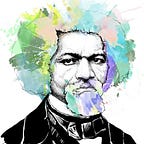Speaking Truth to Civil Rights
Since the first Black body was stolen from the shores of Africa, there has been unjust treatment against Black people in America that continues in our institutions. The Civil Rights Movement was an organized effort by Black Americans to end racial discrimination and change institutional practices to bring forth equal rights to all Americans. Taking place primarily between the 1950s and ’60s in the Southern United States, the (mostly) nonviolent movement addressed a nation riddled with white supremacy and sought to create a society where Black people could feel safe in their own country. Though the north’s victory of the Civil War led to the abolishment of slavery, discrimination and hate crimes were exacerbated for Black Americans.
The reconstruction era was brought into action in May of 1865, which was soon followed by the implementation of the 13th amendment, which abolished slavery in the U.S. The 13th Amendment made systemic slavery illegal, though not impossible to further discriminate and imprison Black Americans. In fact, the amendment indicates a clear loophole that distinguishes slavery as illegal “Except as punishment for a crime whereof the party shall have been duly convicted.” This created a way in which white people could continue to oppress Black people by creating laws at an institutional level that criminalized the very existence of Black Americans, thus creating the beginning notions of modern-day slavery.
Black codes were put into place that upheld strict local and state laws that detailed the restrictions that limited the freedoms Black Americans had. The codes ensured that white people still had power in a post-slavery society. The legal system was built in opposition of Black citizens, and the police and judges that upheld the racist laws were often confederate soldiers upholding their white supremacist beliefs. Along with the police force came the Ku Klux Klan (KKK), a ruthless confederate organization that sought to dehumanize and terrorize Black communities. Segregation was prominent in the United States and it was designed to deny people of color the right to coexist with white people. From segregated waiting rooms in bus and train stations to separate water fountains, restrooms, entrances, elevators, cemeteries, cashier windows, and more, Black people were targeted to be seen as “other” in society. At any given time, Black Americans were at constant risk of false accusations, random beatings, terroristic lynchings, physical abuse, and overall mistreatment by their white neighbors. The Black codes expanded to the strict Jim Crow laws that haunted America for nearly 100 years.
Throughout the mistreatment, Black people actively protested the unjust persecution of Black bodies. The Civil Rights Movement came about when there was an increase in civil rights activists in the Black community who rallied for their human rights. The movement gained much traction through the landmark 1954 Brown v. Board of Education Supreme Court case, which deemed segregation in public schools unconstitutional. After a very painful, public struggle, the movement eventually brought about the end of the Jim Crow segregation era when, in 1964, President Lyndon B. Johnson signed the Civil Rights Act.
The inequity that plagued the United States in the 20th century created complex irreversible damage to a country that claimed to hold “life, liberty, and the pursuit of happiness” above all else. This struggle for social justice continues today and must continue in order to fully escape the institutional racism that was designed to prohibit Black Americans from prospering.
